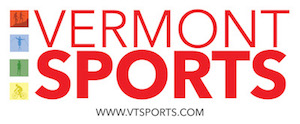Orthotics and You
By
Robert Rinaldi, DPM
Posted February 12th, 2011
Understanding foot and leg function is complicated and confusing. The normal anatomy of the foot contains 26 bones, 33 joints, and hundreds of ligaments. The foot functions as a mobile adaptor to the uneven surfaces beneath it. I like to think of the foot as an old fashioned chronometer. Each gear has its turn to function and then passes off to the next in line. At foot strike, the foot bones absorb shock, then the foot stabilizes the body above it, and finally it mobilizes strength to propel the body forward. Anatomical anomalies in the foot and leg can cause malfunction, resulting in injury and pain in the foot, leg, knee, thigh, hip, and low back.
THE BIRTH OF ORTHOTICS
Merton Root, DPM, William Orien, DPM, and John Weed, DPM, a team of California podiatrists, began research in the early 1970s that today is considered the cornerstone to understanding the complicated and varied functions of the foot and how it affects the entire lower kinetic chain. Their research was used by the athletic shoe industry to launch continued efforts in prototype designs yielding the sophisticated shoes that we have today. In their studies, the Merton Root team found that anatomical malfunctions in the foot could be altered with balancing plates inside shoes. Thus orthotics were born, and, as with the sophisticated athletic shoes that we have today, orthotics have undergone many changes. Orthotics now can be slim, trim, and designed to work in most shoes without having to alter shoe size or fit. They can be made from polypropylene, which means they will never need replacing, tweaking, or rebuilding.
BEWARE THE IMPOSTER ORTHOTIC
Essentially, all of the over-the-counter orthotic products that can be purchased in a pharmacy or sport shop are really not orthotics. In my opinion, most over-the-counter products do not meet the functional needs of feet. One product called Superfeet comes close. They make several models: Superfeet Green and Superfeet Blue are best. Green is designed to help control hyperpronation and Blue works well for the foot that is lacking in shock absorption, often referred to as the supinated foot. About 85 percent of the population hyperpronates, so if you had to make a guess as to what kind of shoes you need, the odds are in favor of needing shoes that help control hyperpronation. The same could be said for Superfeet Green. However, this product usually makes it necessary to remove the insole from the shoe, which unfortunately reduces the shoe’s functionality. Anytime orthotics necessitate removing the shoe’s insole, the design function of the shoe itself is depreciated.
Custom orthotics may have top covers and this will also necessitate the removal of the shoes’ insoles. Also, a top cover can reduce the function of a properly designed orthotic. When a soft cushiony material covers the orthotic, it may, at first blush, feel really good, but it will provide less than optimal results. Certainly there are situations when a top cover can be helpful. You should question your provider as to your specific needs.
The best choice is a polypropylene orthotic made from a neutral position cast, with a prescription for construction at the laboratory. It does not need a top cover.
WHEN ARE ORTHOTICS NECESSARY
If you are suffering from chronic foot pain, morning stiffness in your feet, ankles, and upper or lower legs, or from lower back pain, you may be hyperpronating to a degree that is causing overuse biomechanical injuries. Pain while running that does not dissipate, but actually intensifies, often leads to a diagnosis of a stress fracture, but the prodrome to this problem is often a biomechanical fault that alters the function of the foot and leg. Knee pain and stiffness can be very disabling to the runner, or any other athlete, and it may be caused from feet that are not working properly.
WHAT SHOULD YOU DO
First be sure that you are not using an athletic shoe that does not match your biomechanical needs. Many times in this column I have commented on the outstanding athletic equipment stores we have in Vermont. My favorites are Skirack in Burlington, Onion River in Montpelier, and Stateline Sports in West Lebanon, NH. They all have a staff that is dedicated and trained to being sure you are in the proper footgear for your foot type.
You should also check your training log. Are you sure that you have not over-extended beyond your conditioning? After checking and changing anything necessary, take a break from training for a few days. When you return to the active list, if the symptoms re-occur, do not hesitate to make an appointment with a specialist. Seek a provider who understands foot function, is an athlete, and has proper training. Do not be afraid to ask questions. Be inquisitive. You may need orthotics. The intrinsically posted polypropylene orthotic that I described above is usually 85 to 90 percent successful in controlling faulty biomechanics resulting from hyperpronation. They are designed for use by athletes, and they will last forever.
Robert Rinaldi is a board-certified podiatrist and podiatric surgeon at the Gifford Medical Center in Randolph, VT. He is a fellow and a founding member of the American Academy of Podiatric Sports Medicine, and a podiatric consultant to the Dartmouth College track and cross-country teams. He is a former nationally ranked long-distance runner, having competed in 25 world-class marathons. You can reach him at Gifford Sports Medicine and Surgery Clinics in Randolph, VT, or at the Sharon Health Clinic in Sharon, VT, 802-728-2490 or 802-763-8000 or at rrinaldi@giffordmed.org.
